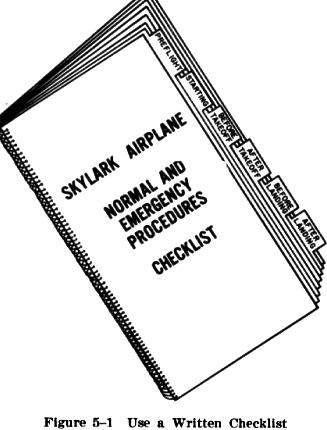Ground Operations
Ground Operations
At many airports there usually is considerable
activity in and around the parking area - aircraft may be operating at
high power settings, taxiing in and out of the area, taking off and landing
on nearby runways, and fuel trucks and people may be moving among the aircraft.
Consequently, constant vigilance must be exercised at all times while performing
ground operations.
The propeller is the most dangerous part of the airplane,
since under certain light conditions, it is difficult to see a revolving
propeller. This may give the illusion that it is not there. As a result,
the files of FAA Aviation Safety Offices contain many cases that read:
"Victim walked into a rotating propeller."
All pilots should form the habit of walking along the inner
edge of the terminal ramp or parking area to the point at which the assigned
airplane is located. When the parking spot is reached, the airplane should
be approached from the rear. (This same procedure should be followed, in
reverse order, whenever leaving the airplane.) While approaching the airplane,
the pilot should note the presence of obstructions and articles such as
fire extinguishers, fueling or maintenance equipment, or chocks that could
be a hazard when taxiing the airplane.
| The accomplishment of a safe, pleasant flight begins with a careful
visual inspection before the pilot enters the airplane. In addition, a
planned routine of starting, warmup, taxiing, and before takeoff checks
will assure that the airplane is operating properly while there still is
an opportunity to correct any discrepancy which may appear. When well organized,
these checks can be made quickly, and soon will become matters of habit;
the appearance, sound, and even the odor in the airplane will become familiar,
and anything unfamiliar will alert the pilot that something is not as it
has been or should be.
The use of an appropriate written checklist to inspect and start the
airplane, as well as for all other ground checks and procedures, is highly
recommended.
Checklists are guides for use in ensuring that all necessary
items are checked in a logical sequence. The beginning pilot should not
get the idea that the list is merely a crutch for poor memory - even the
most experienced professional pilots never attempt to fly without an appropriate
checklist. The habit of using a written checklist for the airplane being
used should be so instilled in pilots that they will follow this practice
throughout their flying activities (Fig. 5-1). |
|
